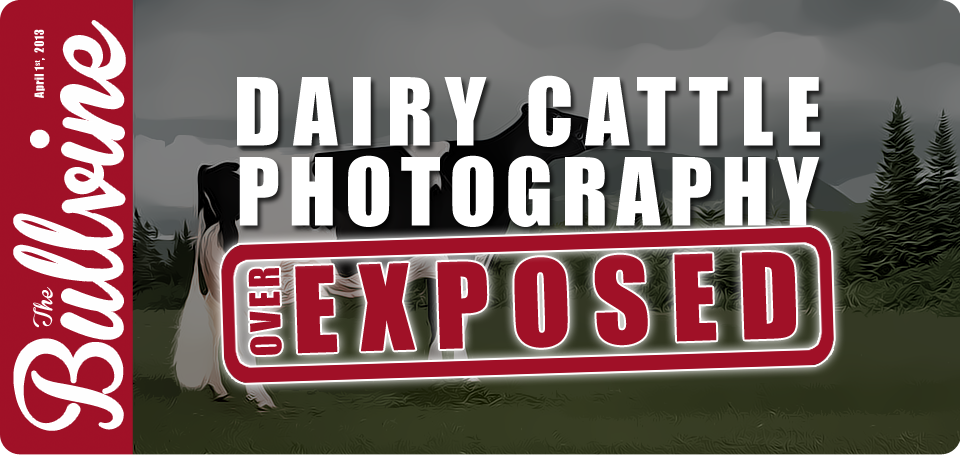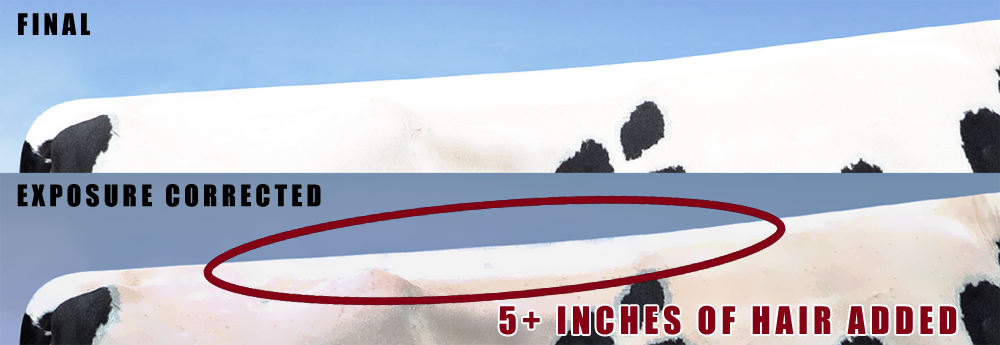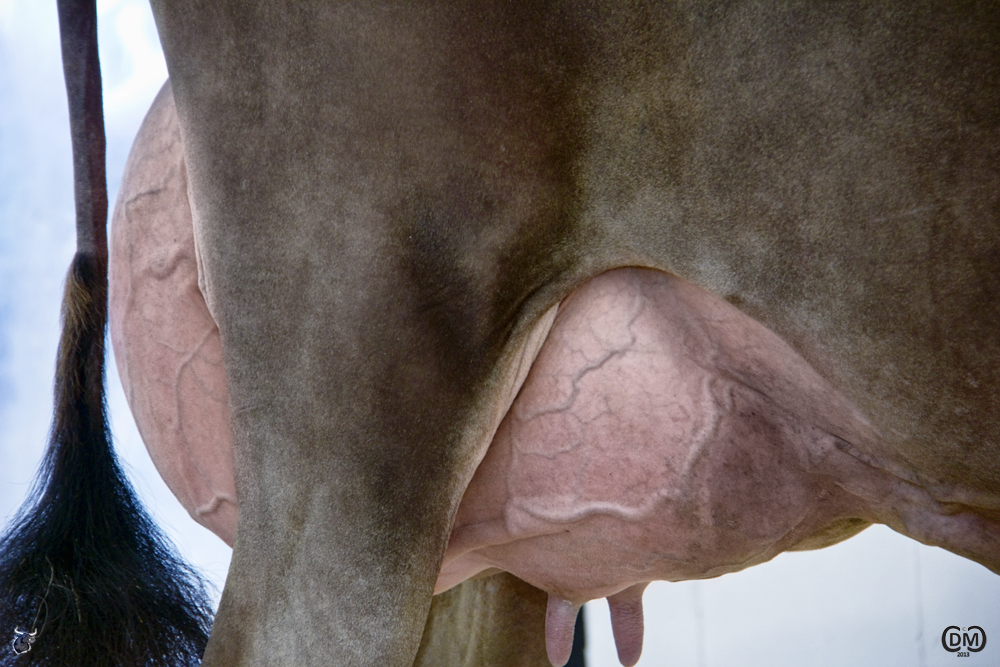The art of dairy cattle photography has certainly changed over the past 15 years. With the introduction of digital cameras and advancements in programs like Adobe Photoshop, there is no question the industry is forever changed. The problem is, with all these changes, there has been no one to establish or regulate a code of ethics to ensure that the animal you see in pictures is the same animal you are investing in when you buy embryos, progeny or semen from them.
I cannot tell you the number of times breeders have told us that the cow they saw in the picture looked nothing like the animal in real life. While this non-reality has become acceptable for super models, that should not be the case with dairy cattle photos. In the fashion industry you are not buying the genetics the super model has to offer, but rather the clothing she is wearing. That’s a key difference. A difference that many need to remember when taking and editing dairy cattle photos. (Read more: Dairy Cattle Marketing Ethics – Do they exist? And Business Ethics and Marketing Dairy Cattle Genetics) Sure we all want the animal to look her best but that means she still looks like herself and not some other animal all together.
The following are three techniques that many livestock photographers use that “most” would consider acceptable and yet they really do a great deal to make the animal look considerably different than her true genetic self.
Addition to Toplines
While photographers have been adding hair, foam, tape, etc. to cows’ toplines for years, programs like Photoshop make it much easier to do and even harder to detect. (Read more: Has Photo Enhancement Gone Too Far) The following is an example of just how much the typical picture has had added. The light overlay (Fade) is the amount that was present in the final picture and the dark is the cow’s natural self.
Not a big deal some would say, but there is no question that this adds about 3-5 points on loin strength, 1-2 points on rump and drastically enhances general appearance. It is being done so often these days that it actually catches your eye when it’s not done. This is very much a FALSE representation of what an animal’s actually genetic potential is.
Over Exposure of Photos
To hide this type of work many photographers will over expose (brighten) the white sections of the photos or burn (darken) the black sections of an animal so the average eye cannot catch what has been done. Here is an example of a cow that has had this one. The following is a picture comparing her topline as it appears in the final picture and the same topline with the exposure corrected.
A very flat loined heifer that would have looked very common in her picture ended up looking much better. In measuring the proportions of this animal we estimate that this animal has had 6-7 inches of “hair” added. The interesting point is that this animal is classified VG-85 and yet in her picture looks more like 88 or even 89 points. A big difference especially in an animal that many breeders could potentially be purchasing genetics from and, more importantly, semen from her sons.
This not only makes a difference in their toplines, but also in the cleanliness of their legs and other parts. By over or under exposing details as needed you can greatly hide their flaws. Some photographers comment that since they didn’t “edit” the conformation of the cow, it’s acceptable. By hiding the flaws with these techniques, they are greatly misrepresenting the animal’s natural appearance and genetic potential.
Clarity
Have you ever noticed that the pictures you take with your own camera, even your phone camera, have more clarity than the ones that are taken by most professional photographers who have cameras and equipment costing thousands of dollars? Why do you think that is? Typically this is because of the Photoshop skills of the photographer. To make all these “typical” edits and still maintain that level of clarity requires a great deal of skill. Since most of the photographers are just that photographers and not graphic designers, that is an area that they have not mastered yet. The easiest way to account for this is to reduce the clarity so that some parts of the picture are very clear and others are not. Here is an example of the clarity of what a typical professional dairy cattle photographer’s picture should look like. It is taken with the same level of equipment, and has only had slight color correction and no exposure adjustments to the animal.
How many professional photographers’ photos look this clear? They should. They easily have the equipment to achieve this or even greater results.
The Bullvine Bottom Line
While there is no doubt programs like Photoshop make it so that anything is possible, should it not be the job of the photographer to make sure the image they produce is the best possible representation of that animal and not just what they think will sell the most embryos or semen?
To read more about this check out The Dairy Marketing Code of Conduct
To get a copy of the Dairy Marketing Code of Conduct please click here.
If you believe that there is a need for a ethical standard in marketing dairy cattle genetics please like and share this post.




















Leave a Reply
You must be logged in to post a comment.